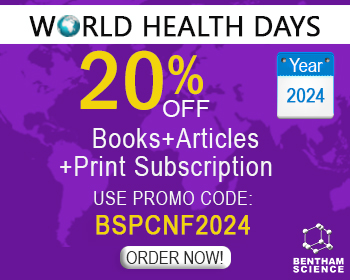Abstract
Glioblastoma multiforme (GBM) continues as one of the most lethal cerebral cancers despite standard therapeutic modalities, such as maximum surgical resection and chemoradiation. The minimal effectiveness of existing therapies necessitates the development of additional drug candidates that could improve the prognosis of GBM patients. Accumulating evidence suggests that calcium (Ca2+) is involved in the processes of cell proliferation, metastasis, angiogenesis, migration, and invasiveness. Therefore, Ca2+ could serve as a crucial regulator of tumorigenesis and a potential treatment target in GBM. In this context, specific natural products are known to modulate Ca2+ signaling pathways implicated in tumor growth, apoptosis, angiogenesis, and development of GBM. Here, the focus is on the function of Ca2+ as a therapeutic target in GBM and reviewing certain natural products that affect the signaling pathways of Ca2+.
Keywords: Glioblastoma multiforme, calcium, metastasis, natural products, apoptosis, angiogenesis.
[http://dx.doi.org/10.2174/0929867327666200130104757] [PMID: 32000638]
[http://dx.doi.org/10.1007/s43440-020-00081-7] [PMID: 32152926]
[http://dx.doi.org/10.1007/s10565-017-9420-y] [PMID: 29383547]
[PMID: 31880372]
[http://dx.doi.org/10.3389/fphys.2018.00170] [PMID: 29615917]
[http://dx.doi.org/10.1387/ijdb.150200jh] [PMID: 26679953]
[http://dx.doi.org/10.3390/cancers11020145] [PMID: 30691160]
[PMID: 28801101]
[http://dx.doi.org/10.1038/ncb1203-1041] [PMID: 14647298]
[http://dx.doi.org/10.1016/j.ceca.2005.06.020] [PMID: 16095689]
[http://dx.doi.org/10.1016/j.ceca.2005.06.015] [PMID: 16105683]
[PMID: 31611741]
[http://dx.doi.org/10.1038/nrc723] [PMID: 12635177]
[http://dx.doi.org/10.1016/S0163-7258(03)00042-1] [PMID: 12804695]
[http://dx.doi.org/10.1016/0014-5793(90)81290-5] [PMID: 2166693]
[http://dx.doi.org/10.1016/j.ceca.2011.05.004] [PMID: 21809493]
[http://dx.doi.org/10.2119/2006-00086.Lee] [PMID: 17380198]
[http://dx.doi.org/10.1159/000481873]
[PMID: 31313856]
[http://dx.doi.org/10.1111/j.1742-4658.2009.06927.x] [PMID: 19243429]
[http://dx.doi.org/10.7554/eLife.13405] [PMID: 26949248]
[http://dx.doi.org/10.1007/s11302-009-9146-2] [PMID: 19301146]
[http://dx.doi.org/10.1007/978-3-319-26974-0]
[http://dx.doi.org/10.1007/BF01837406] [PMID: 8594545]
[http://dx.doi.org/10.1016/j.bbamem.2014.08.016]
[http://dx.doi.org/10.1155/2012/951497]
[http://dx.doi.org/10.1016/j.ceca.2006.06.010] [PMID: 16999997]
[http://dx.doi.org/10.1126/science.1169096] [PMID: 19251629]
[http://dx.doi.org/10.1007/s00424-012-1160-5] [PMID: 23014880]
[http://dx.doi.org/10.1016/S0008-6363(00)00210-8] [PMID: 11121810]
[http://dx.doi.org/10.3389/fncel.2014.00043] [PMID: 24605083]
[http://dx.doi.org/10.1158/1535-7163.MCT-10-0923] [PMID: 21224390]
[http://dx.doi.org/10.18632/oncotarget.1903] [PMID: 24797725]
[http://dx.doi.org/10.1007/s00424-013-1254-8] [PMID: 23515871]
[http://dx.doi.org/10.1152/physrev.00020.2014] [PMID: 26400989]
[http://dx.doi.org/10.1016/j.ceca.2016.12.009] [PMID: 28089266]
[http://dx.doi.org/10.1016/j.phrs.2019.104282] [PMID: 31129179]
[http://dx.doi.org/10.1371/journal.pone.0089292] [PMID: 24586666]
[http://dx.doi.org/10.1158/0008-5472.CAN-05-0376] [PMID: 16489003]
[http://dx.doi.org/10.1371/journal.pone.0042541] [PMID: 23049731]
[http://dx.doi.org/10.3389/fnmol.2012.00064] [PMID: 22593733]
[http://dx.doi.org/10.1002/jnr.23169] [PMID: 23280445]
[http://dx.doi.org/10.1371/journal.pbio.3000402] [PMID: 31568485]
[http://dx.doi.org/10.1073/pnas.1113882109] [PMID: 22190496]
[http://dx.doi.org/10.1016/j.tcb.2016.05.009] [PMID: 27319281]
[http://dx.doi.org/10.1016/j.bbamcr.2016.01.018] [PMID: 26826650]
[http://dx.doi.org/10.1242/dev.033340] [PMID: 19211674]
[http://dx.doi.org/10.1097/00005072-199812000-00002] [PMID: 9862633]
[http://dx.doi.org/10.1002/jcb.240570218] [PMID: 7539008]
[http://dx.doi.org/10.1023/A:1012201300188] [PMID: 11716067]
[http://dx.doi.org/10.1096/fj.11-202820] [PMID: 22415301]
[http://dx.doi.org/10.1371/journal.pone.0003769] [PMID: 19020659]
[http://dx.doi.org/10.18632/oncotarget.2283] [PMID: 25277194]
[http://dx.doi.org/10.1007/s13277-015-3577-x] [PMID: 26088448]
[http://dx.doi.org/10.18632/oncotarget.21436] [PMID: 29221175]
[http://dx.doi.org/10.1111/j.1749-6632.2002.tb04681.x] [PMID: 12485909]
[http://dx.doi.org/10.1074/jbc.M114.620922] [PMID: 25391657]
[http://dx.doi.org/10.1016/j.yexmp.2011.09.005] [PMID: 21945734]
[http://dx.doi.org/10.1007/s00018-013-1521-z] [PMID: 24281762]
[http://dx.doi.org/10.1158/0008-5472.CAN-07-2034] [PMID: 17909056]
[http://dx.doi.org/10.1074/jbc.M109.097675] [PMID: 20139089]
[http://dx.doi.org/10.1111/j.1476-5381.2012.01852.x] [PMID: 22233416]
[http://dx.doi.org/10.1002/jcb.27919] [PMID: 30362154]
[http://dx.doi.org/10.1038/onc.2016.206] [PMID: 27321181]
[http://dx.doi.org/10.18632/oncotarget.27106] [PMID: 31448051]
[http://dx.doi.org/10.18632/oncotarget.2976] [PMID: 25738360]
[http://dx.doi.org/10.3892/or.15.3.595] [PMID: 16465418]
[http://dx.doi.org/10.1016/j.neuroscience.2010.12.025] [PMID: 21185356]
[PMID: 31309072]
[http://dx.doi.org/10.1371/journal.pone.0064169] [PMID: 23734191]
[http://dx.doi.org/10.1016/j.cell.2010.08.040] [PMID: 20887894]
[http://dx.doi.org/10.1016/j.ccr.2008.12.019] [PMID: 19185847]
[http://dx.doi.org/10.1186/1756-9966-32-20] [PMID: 23578185]
[http://dx.doi.org/10.1161/01.RES.0000338496.95579.56] [PMID: 18845811]
[http://dx.doi.org/10.1016/S0360-3016(01)01808-9]
[http://dx.doi.org/10.1016/j.fct.2019.04.012] [PMID: 30991130]
[http://dx.doi.org/10.1007/s11060-010-0221-x] [PMID: 20467782]
[PMID: 20577970]
[http://dx.doi.org/10.1007/s10565-006-0104-2] [PMID: 16897440]
[http://dx.doi.org/10.1248/bpb.32.1399] [PMID: 19652380]
[http://dx.doi.org/10.1016/j.canlet.2004.06.039] [PMID: 15639343]
[http://dx.doi.org/10.3109/13880209.2016.1156709] [PMID: 26984021]
[http://dx.doi.org/10.1002/mc.22220] [PMID: 25252179]
[http://dx.doi.org/10.1007/s11010-017-2965-5] [PMID: 28205096]
[http://dx.doi.org/10.1016/j.ijpharm.2016.01.018] [PMID: 26775062]
[http://dx.doi.org/10.14791/btrt.2019.7.e21] [PMID: 31062528]
[http://dx.doi.org/10.18632/oncotarget.3955] [PMID: 25961153]
[http://dx.doi.org/10.1007/s00432-009-0715-0] [PMID: 19916024]
[http://dx.doi.org/10.3389/fnmol.2017.00171] [PMID: 28663722]
[http://dx.doi.org/10.1007/s11033-019-04618-9] [PMID: 30737617]
[PMID: 31632536]
[http://dx.doi.org/10.1016/j.canlet.2010.04.022] [PMID: 20580866]
[http://dx.doi.org/10.3892/ijo.26.1.241] [PMID: 15586246]
[http://dx.doi.org/10.1016/j.bbamcr.2011.05.003] [PMID: 21596068]
[http://dx.doi.org/10.1111/j.2042-7158.1998.tb03331.x] [PMID: 9821667]
[http://dx.doi.org/10.2147/DDDT.S176403] [PMID: 30323558]
[http://dx.doi.org/10.1186/1471-2407-8-58] [PMID: 18294404]
[http://dx.doi.org/10.1016/j.jbior.2018.10.003] [PMID: 30361003]
[http://dx.doi.org/10.1016/j.jep.2010.03.037] [PMID: 20371283]
[http://dx.doi.org/10.1016/j.taap.2007.12.027] [PMID: 18275980]
[PMID: 19360335]
[http://dx.doi.org/10.1093/carcin/bgq215] [PMID: 20974686]
[http://dx.doi.org/10.1158/1535-7163.MCT-14-0634] [PMID: 25504754]
[http://dx.doi.org/10.3389/fonc.2019.00364] [PMID: 31139563]
[http://dx.doi.org/10.18632/oncotarget.11396] [PMID: 27557493]
[http://dx.doi.org/10.1080/13880209.2018.1548627] [PMID: 31070539]
[http://dx.doi.org/10.1248/bpb.33.1644] [PMID: 20930370]
[http://dx.doi.org/10.1186/s12885-019-5891-y] [PMID: 31307409]
[http://dx.doi.org/10.1158/1535-7163.MCT-09-0498] [PMID: 20103602]
[http://dx.doi.org/10.1007/s10059-011-0027-5] [PMID: 21229324]
[http://dx.doi.org/10.1158/0008-5472.CAN-09-2886] [PMID: 20103623]
[http://dx.doi.org/10.1016/j.bcp.2009.11.007] [PMID: 19914218]
[http://dx.doi.org/10.1158/1535-7163.MCT-07-0371] [PMID: 18025276]
[http://dx.doi.org/10.1016/j.breast.2018.06.009] [PMID: 30007266]
[http://dx.doi.org/10.3389/fphar.2018.00889] [PMID: 30150937]
[PMID: 22110202]
[http://dx.doi.org/10.1124/jpet.103.061002] [PMID: 14617682]
[http://dx.doi.org/10.1038/sj.bjp.0706134] [PMID: 15700028]
[http://dx.doi.org/10.1158/1535-7163.MCT-14-0402] [PMID: 25398831]
[http://dx.doi.org/10.1371/journal.pone.0076918] [PMID: 24204703]
[http://dx.doi.org/10.1016/j.tranon.2018.12.004] [PMID: 30597288]
[http://dx.doi.org/10.7554/eLife.48792] [PMID: 31566564]
[http://dx.doi.org/10.1002/glia.21044] [PMID: 20645411]
[http://dx.doi.org/10.1016/j.neuropharm.2005.11.008] [PMID: 16386766]
[http://dx.doi.org/10.1002/ijc.29573] [PMID: 25903924]
[http://dx.doi.org/10.3390/cancers11030322] [PMID: 30845786]
[PMID: 26976969]
[http://dx.doi.org/10.1111/jcpt.13039] [PMID: 31545523]
[http://dx.doi.org/10.1007/s10571-015-0254-y] [PMID: 26351174]
[http://dx.doi.org/10.1038/nm.2827] [PMID: 22820645]
[http://dx.doi.org/10.1111/j.1471-4159.2007.04582.x] [PMID: 17442041]
[http://dx.doi.org/10.2174/1871520619666190731152942]
[http://dx.doi.org/10.1016/j.ejmech.2019.05.093] [PMID: 31207463]
[http://dx.doi.org/10.1023/B:CYTO.0000039917.60348.45] [PMID: 19003220]
[http://dx.doi.org/10.1080/10408398.2011.653458] [PMID: 24915411]
[http://dx.doi.org/10.1078/094471103322004785] [PMID: 12809359]
[http://dx.doi.org/10.1016/j.phymed.2009.12.008] [PMID: 20096548]
[http://dx.doi.org/10.2147/OTT.S98875] [PMID: 27143925]
[http://dx.doi.org/10.1002/jcp.27054] [PMID: 30070691]
[http://dx.doi.org/10.1016/j.lfs.2012.03.027] [PMID: 22480511]
[http://dx.doi.org/10.5772/intechopen.77076]
[http://dx.doi.org/10.18632/oncotarget.3872] [PMID: 25965832]
[http://dx.doi.org/10.1002/biof.1344] [PMID: 27896883]
[http://dx.doi.org/10.1002/jcp.25778] [PMID: 28059453]
[http://dx.doi.org/10.1016/j.phymed.2009.05.020] [PMID: 19577457]
[http://dx.doi.org/10.1080/10408398.2017.1358139] [PMID: 28799796]
[http://dx.doi.org/10.1007/s40291-016-0202-7] [PMID: 27241179]
[http://dx.doi.org/10.2174/1381612822666160527113501] [PMID: 27229723]
[http://dx.doi.org/10.1016/j.biopha.2016.05.037] [PMID: 27470399]
[http://dx.doi.org/10.1074/jbc.M111.318733] [PMID: 22303019]
[http://dx.doi.org/10.1007/s10495-008-0224-7] [PMID: 18506627]
[http://dx.doi.org/10.1016/j.bmc.2012.08.029] [PMID: 22989913]
[http://dx.doi.org/10.3892/ijmm.2015.2167] [PMID: 25847862]
[http://dx.doi.org/10.1016/j.canlet.2015.11.021] [PMID: 26607901]
[http://dx.doi.org/10.1038/sj.bjp.0706970] [PMID: 17160011]
[http://dx.doi.org/10.37212/jcnos.330858]
[http://dx.doi.org/10.1016/j.tiv.2019.104592] [PMID: 31356857]
[http://dx.doi.org/10.1080/01635581.2018.1446090] [PMID: 29570984]
[http://dx.doi.org/10.1016/j.ceca.2014.09.002] [PMID: 25260713]
[http://dx.doi.org/10.3892/mmr.1.4.511] [PMID: 21479441]
[http://dx.doi.org/10.1080/10715760500335447] [PMID: 16298764]
[http://dx.doi.org/10.1007/s12264-013-1394-z] [PMID: 24338484]
[PMID: 19894226]
[http://dx.doi.org/10.1007/s00210-003-0852-y] [PMID: 14647974]
[http://dx.doi.org/10.1016/j.canlet.2010.11.008] [PMID: 21257259]
[http://dx.doi.org/10.1080/10715760802112791] [PMID: 18484413]
[http://dx.doi.org/10.1142/S0192415X17500471] [PMID: 28514905]
[http://dx.doi.org/10.1155/2013/354840]
[http://dx.doi.org/10.1016/j.cbi.2013.06.004] [PMID: 23774672]
[http://dx.doi.org/10.1016/j.etap.2013.02.011] [PMID: 23501608]
[http://dx.doi.org/10.3892/or.2019.6976] [PMID: 30747218]
[http://dx.doi.org/10.1016/j.ejphar.2010.05.043] [PMID: 20553913]
[http://dx.doi.org/10.1186/s12935-019-0868-0] [PMID: 31171918]
[PMID: 26851027]
[http://dx.doi.org/10.3389/fphys.2017.00761] [PMID: 29033852]
[http://dx.doi.org/10.1016/j.cbi.2016.04.010] [PMID: 27060209]
[http://dx.doi.org/10.1016/j.phrs.2019.04.004] [PMID: 31002949]
[http://dx.doi.org/10.3892/etm.2019.7419] [PMID: 30988795]
[http://dx.doi.org/10.1016/j.lfs.2019.01.046] [PMID: 30708101]
[http://dx.doi.org/10.1002/ptr.3178] [PMID: 20878707]
[http://dx.doi.org/10.1371/journal.pone.0018490] [PMID: 21559510]
[http://dx.doi.org/10.1016/j.taap.2016.05.018] [PMID: 27236003]
[http://dx.doi.org/10.2174/156652412803833508] [PMID: 22834827]
[http://dx.doi.org/10.1089/ars.2009.2440]
[http://dx.doi.org/10.1186/s12885-018-4267-z] [PMID: 29614990]
[http://dx.doi.org/10.1016/j.cbi.2014.07.012] [PMID: 25106108]
[http://dx.doi.org/10.1007/s12640-016-9679-4] [PMID: 27815817]
[http://dx.doi.org/10.1080/14756360902779193] [PMID: 19772491]
[http://dx.doi.org/10.1038/srep36543] [PMID: 27824118]
[PMID: 20424564]
[http://dx.doi.org/10.1016/j.lfs.2004.04.043] [PMID: 15350831]
[http://dx.doi.org/10.1007/s12015-010-9175-9] [PMID: 20809257]
[http://dx.doi.org/10.1002/jcb.21373] [PMID: 17486636]
[PMID: 21971890]
[http://dx.doi.org/10.1007/s11060-007-9349-8] [PMID: 17415525]
[http://dx.doi.org/10.1038/labinvest.2017.46] [PMID: 28504686]
[http://dx.doi.org/10.1016/S0197-0186(01)00089-4] [PMID: 11741008]
[http://dx.doi.org/10.1007/s11060-007-9369-4] [PMID: 17377739]
[http://dx.doi.org/10.3892/ijo.2017.3858] [PMID: 28112374]
[http://dx.doi.org/10.1080/14786419.2015.1062760] [PMID: 26212208]
[http://dx.doi.org/10.1016/j.bmcl.2019.02.007] [PMID: 30765189]
[http://dx.doi.org/10.1016/j.bmcl.2015.08.066] [PMID: 26341136]
[http://dx.doi.org/10.18632/oncotarget.22537] [PMID: 29290985]
[http://dx.doi.org/10.1002/glia.20364] [PMID: 16817201]
[http://dx.doi.org/10.1016/j.intimp.2014.06.040] [PMID: 25027630]
[http://dx.doi.org/10.1002/jnr.20240] [PMID: 15378515]
[http://dx.doi.org/10.1038/cddis.2013.85] [PMID: 23538442]
[http://dx.doi.org/10.1016/j.bbrc.2011.08.037] [PMID: 21867678]
[http://dx.doi.org/10.1016/j.taap.2015.08.016] [PMID: 26341291]
[http://dx.doi.org/10.1371/journal.pone.0020849] [PMID: 21695150]
[http://dx.doi.org/10.1158/1535-7163.MCT-04-0056] [PMID: 15827328]
[http://dx.doi.org/10.1002/jcp.27409] [PMID: 30317578]
[http://dx.doi.org/10.7575/aiac.abcmed.v.7n.2p.44]
[http://dx.doi.org/10.3390/biom10010161] [PMID: 31963897]
[http://dx.doi.org/10.1124/mol.107.039040] [PMID: 17848600]
[http://dx.doi.org/10.3390/molecules19067327] [PMID: 24905603]
[http://dx.doi.org/10.3171/2016.1.JNS152077] [PMID: 27419830]
[http://dx.doi.org/10.31989/ffhd.v9i6.607]
[http://dx.doi.org/10.1093/carcin/bgg178] [PMID: 14514658]
[http://dx.doi.org/10.1016/j.canlet.2008.04.018] [PMID: 18504070]
[http://dx.doi.org/10.1158/0008-5472.CAN-06-0139] [PMID: 16740722]
[http://dx.doi.org/10.1158/1535-7163.MCT-06-0494] [PMID: 17339367]
[http://dx.doi.org/10.1002/ijc.23647] [PMID: 18561315]
[http://dx.doi.org/10.18632/oncotarget.8968] [PMID: 27528021]
[http://dx.doi.org/10.1016/j.neuroscience.2006.04.075] [PMID: 16765523]
[http://dx.doi.org/10.3390/md16120516] [PMID: 30572607]
[http://dx.doi.org/10.18632/oncotarget.14496] [PMID: 28061441]
[http://dx.doi.org/10.1093/carcin/bgs328] [PMID: 23079154]
[http://dx.doi.org/10.1038/cddis.2013.85]
[http://dx.doi.org/10.3390/md13042505] [PMID: 25913706]


























